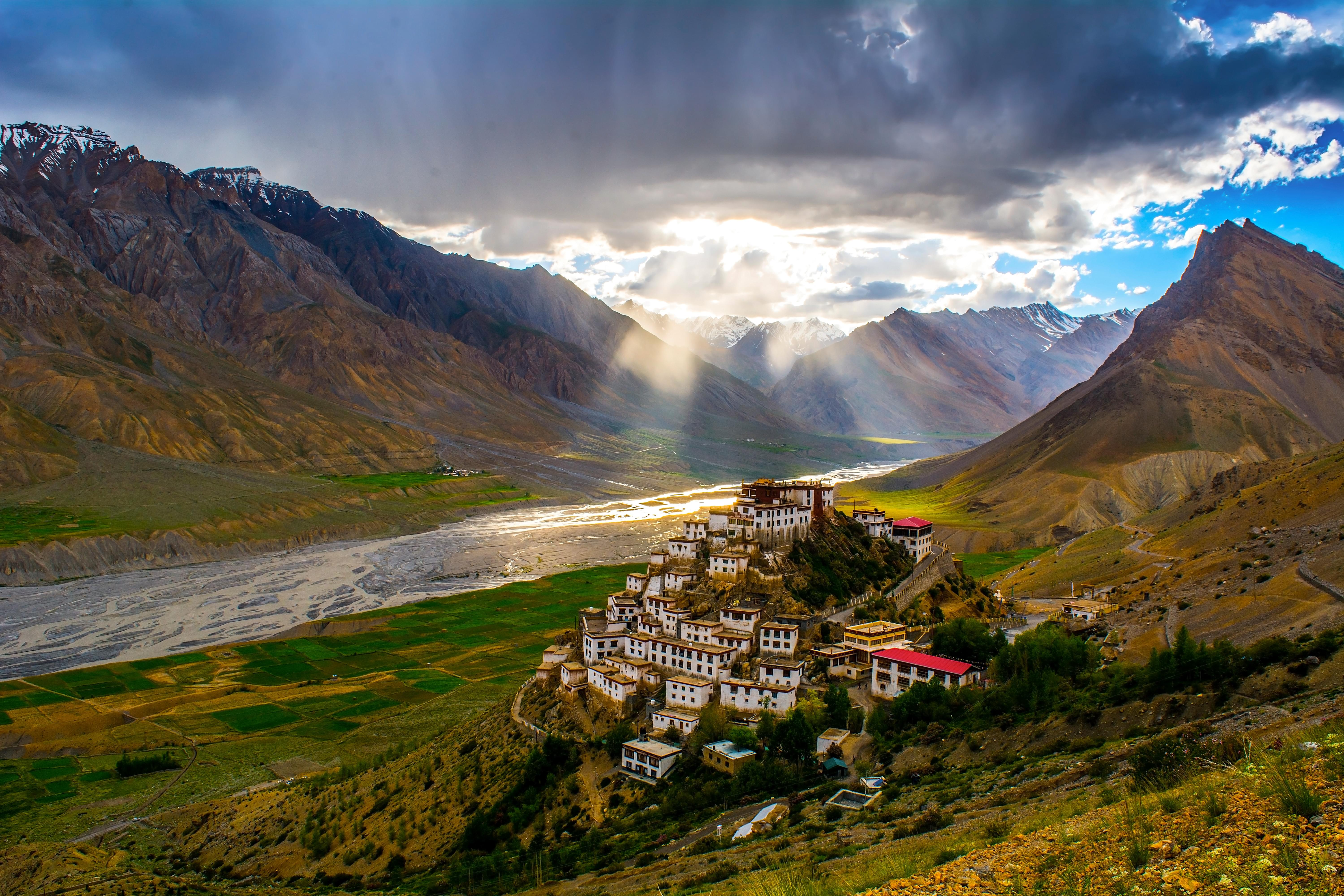Things to do in Spiti Valley in Summer

Strong 8k brings an ultra-HD IPTV experience to your living room and your pocket.
Imagine a land so raw, so surreal, that it feels like you’ve stepped into a dream. Welcome to Spiti Valley, a rugged paradise nestled in the lap of the Himalayas. In summer, when the snow recedes and the valley awakens, Spiti transforms into a breathtaking canvas of towering mountains, crystal-clear rivers, and ancient monasteries whispering tales of time.
Unlike its greener counterpart, Ladakh, Spiti is a cold desert—where the barren landscape is both eerie and mesmerizing. The roads are a challenge, the altitude is high, and yet, those who seek adventure and serenity find their hearts lost in its stark beauty.
From exploring age-old monasteries that stand defiantly on cliffs to trekking through moon-like terrains, Spiti is where solitude meets adventure. The locals, with their warm smiles and stories of a life lived close to the elements, make the journey even more special. Whether you're traveling solo or opting for Spiti Valley Packages, the experience remains unforgettable. You’ll witness rivers cutting through the valley, roads clinging to the mountains, and the sky changing colors as the sun plays its magic.
So, if you’re planning a summer escape, pack your bags, fuel your wanderlust, and get ready for an unforgettable adventure in the untamed landscapes of Spiti Valley.
1. Witness the Monasteries That Whisper Stories of Time
The monasteries of Spiti are not just places of worship; they are time capsules of ancient Tibetan culture. Summer is the perfect time to explore these peaceful sanctuaries, surrounded by the vast emptiness of the valley.
Start with Key Monastery, perched dramatically on a hilltop. The largest and oldest monastery in Spiti, Key is a labyrinth of dimly lit rooms, fluttering prayer flags, and monks lost in deep meditation. The panoramic view from the top is worth every step of the climb.
Then there’s Dhankar Monastery, clinging precariously to a cliffside, looking like it could crumble into the abyss any second. The view from Dhankar is one of the most surreal in Spiti—a vast sea of barren mountains, the Spiti River snaking through the valley below.
For a truly offbeat experience, visit Tabo Monastery, often called the "Ajanta of the Himalayas." With its ancient murals and sculptures, Tabo feels like a living museum of Buddhist art.
Each monastery carries its own charm, its own stories. Sit with a monk, sip some butter tea, and listen to the wisdom of the mountains.
2. Take the Most Scenic Road Trip of Your Life
There’s something about Spiti’s roads—they test your limits, yet reward you with views that words fail to describe. The summer months make these rugged roads accessible, and every turn feels like a revelation.
Starting from Manali, the route via Kunzum Pass is an adventure in itself. You’ll drive through stretches where the road is nothing more than a dusty trail hanging off a cliff. The Losar-Kaza stretch is particularly stunning, with vast, empty landscapes that make you feel like the last person on Earth.
For the ultimate thrill, take a detour to Langza, Hikkim, and Komic—a trio of high-altitude villages that look straight out of a fantasy novel. Hikkim is home to the highest post office in the world, while Komic is the highest motorable village in Asia. Send a postcard from Hikkim—it’s a tiny piece of Spiti that’ll travel the world.
3. Camp by the Mesmerizing Chandratal Lake
If heaven had a lake, it would probably look like Chandratal. This crescent-shaped wonder lies at an altitude of 14,000 feet, shimmering like a sapphire under the Himalayan sky.
The journey to Chandratal is just as exciting as the destination itself. You’ll cross Kunzum Pass, where fluttering prayer flags mark your entry into a world of serenity. The trek from the parking area to the lake is about 2 km, and once you reach, the sight is spellbinding.
Camping here is an experience you’ll never forget. As the sun dips behind the mountains, the lake changes colors—from turquoise to deep blue, then to a haunting silver under the moonlight. The silence is absolute, broken only by the whispers of the wind.
Sit by the lake, gaze at the stars, and let nature work its magic on your soul.
4. Spot a Himalayan Fossil in Langza
Langza is a sleepy little village, famous for something quite unusual—marine fossils. Yes, millions of years ago, Spiti was underwater, and the fossils here are remnants of that ancient ocean.
As you walk through the village, surrounded by rolling meadows and guarded by the towering Buddha statue, keep an eye on the ground. You might just find an ammonite fossil, proof that Spiti was once home to prehistoric sea creatures.
The best part? The villagers are happy to share their fossil-hunting stories. Some might even sell you one as a souvenir—but remember, taking fossils away is discouraged to preserve Spiti’s natural heritage.
5. Experience Life in the Highest Inhabited Villages
Spiti is home to some of the highest inhabited villages in the world, where life moves at a different pace. Staying in these villages is the best way to experience Spitian culture up close.
In Komic, you’ll find the highest monastery in Asia. In Hikkim, you can post a letter from the world’s highest post office. And in Demul, you can stay in a traditional mud house, savoring local dishes like thenthuk (hand-pulled noodle soup) and chhang (barley beer).
The air is crisp, the nights are cold, and the people are warm. It’s a side of the Himalayas that most travelers never see.
6. Trek to Dhankar Lake for an Otherworldly View
Perched high above the Dhankar Monastery, this hidden gem requires a bit of effort to reach. The trek is short but steep, taking you through dusty trails and loose rocks. But once you arrive, the sight of Dhankar Lake—a serene pool of water cradled by barren mountains—is worth every breathless step.
The lake is untouched, its silence deep. Sit by its banks, let the mountain breeze cool your skin, and just exist in the moment.
7. Indulge in Local Delicacies and Butter Tea
Spitian food is simple yet comforting, perfect for the high-altitude chill. Stop by a local café in Kaza and try Tingmo (steamed bread), Momos, and Thukpa (noodle soup).
And of course, don’t miss out on butter tea—a Tibetan drink made with yak butter, tea leaves, and salt. It’s an acquired taste, but when the cold bites, there’s nothing more soothing.
For dessert, try Chhurpi, a hardened yak cheese that locals chew like gum. It’s tough but packed with protein, perfect for long treks.
Final Thoughts
Spiti Valley isn’t just a destination; it’s an experience. It’s about long, silent roads that lead to places forgotten by time. It’s about the warmth of a stranger offering you a cup of butter tea. It’s about standing at 14,000 feet and feeling humbled by the sheer vastness of nature.
If you seek adventure, solitude, and the thrill of the unknown, Spiti in summer is waiting for you. So, pack your bags, hit the road, and let the mountains tell you their stories.
Note: IndiBlogHub features both user-submitted and editorial content. We do not verify third-party contributions. Read our Disclaimer and Privacy Policyfor details.







